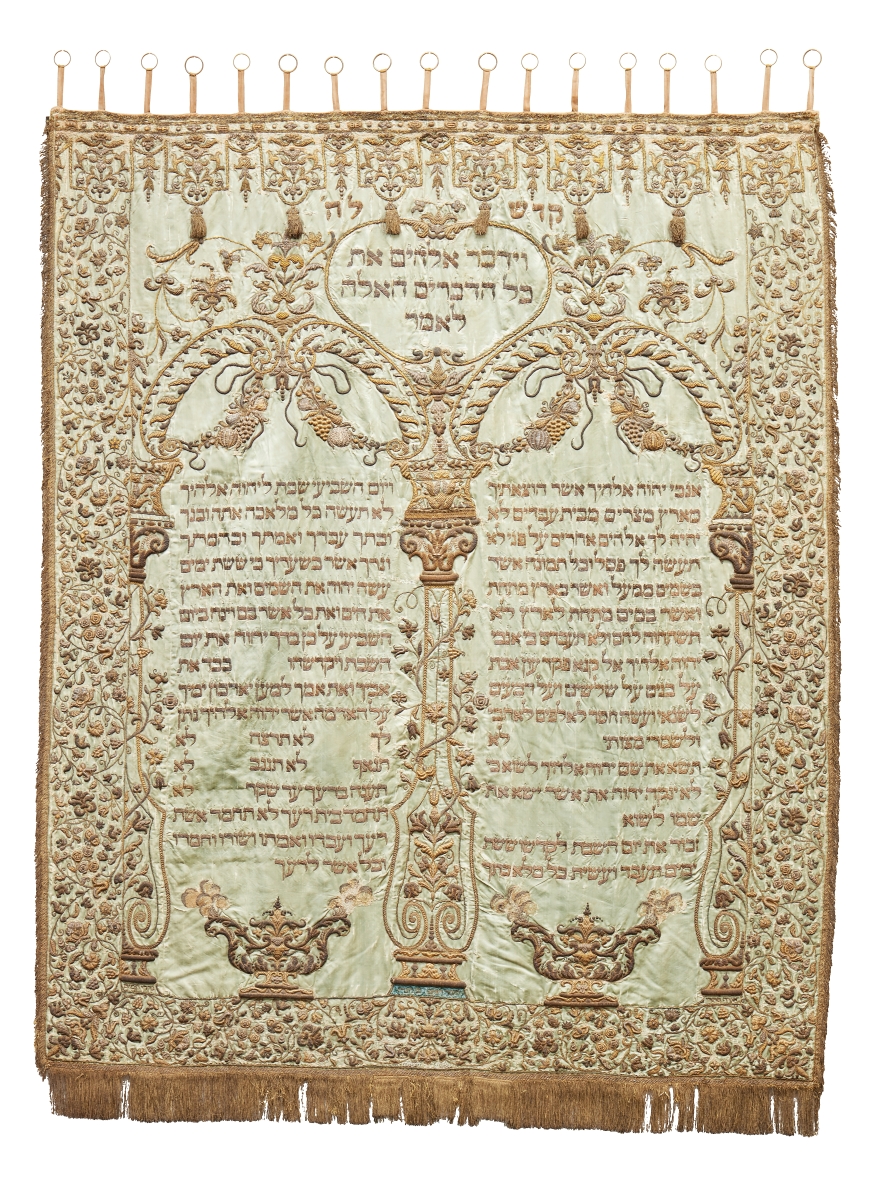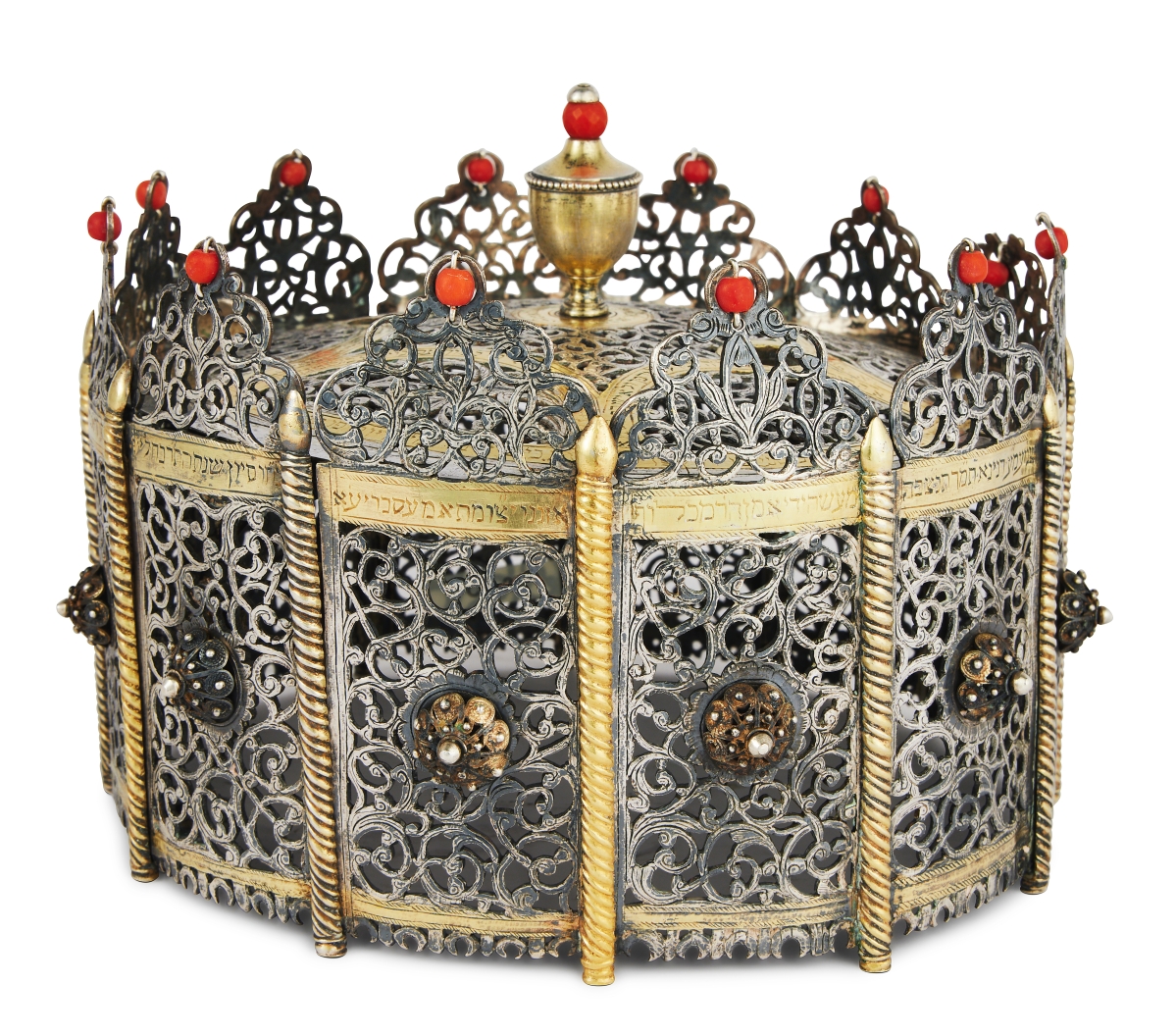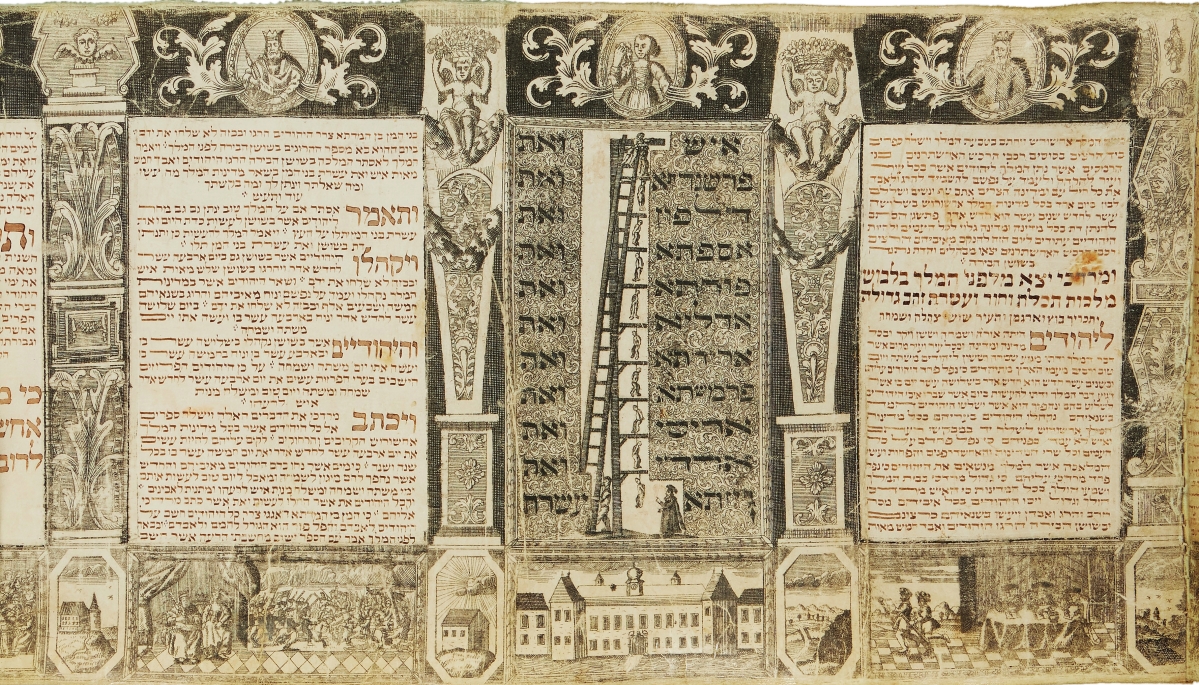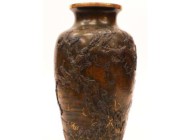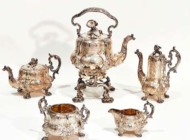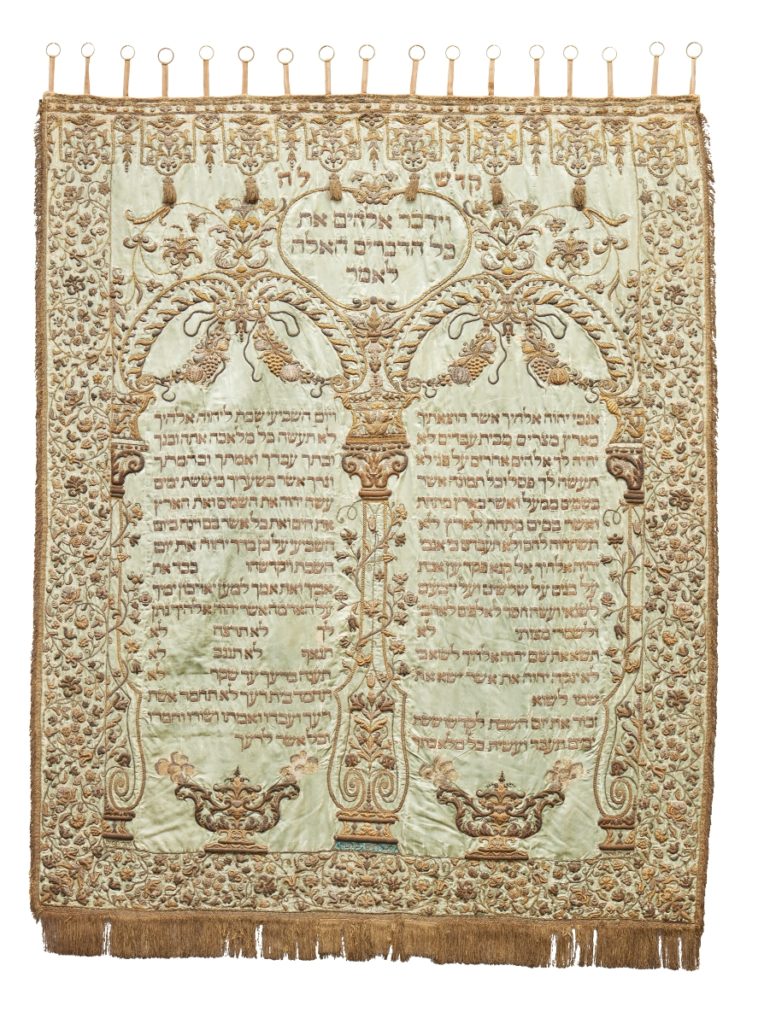
The North Carolina Museum of Art in Raleigh prevailed against other institutions and private collectors to take the sale’s top lot — this early Eighteenth Century Italian torah ark curtain to $170,100. The curtain was noteworthy in being the only known example to feature the complete text of the Ten Commandments ($30/50,000).
Review by Madelia Hickman Ring, Photos Courtesy Sotheby’s
NEW YORK CITY – In two sessions, December 15 and 20, Sotheby’s offered Judaica from the collection of the late Abraham Halpern, a well-known selection of works assembled over nearly 50 years that was considered unparalleled for its breadth and depth. “The Halpern Judaica Collection: Tradition and Treasure” was generally recognized as being the greatest collection of Judaica to come onto the market in a decade and the finest group of Judaica textiles ever to appear at auction. Many of the items in the auction had been published in Jay Weinstein’s A Collector’s Guide to Judaica (1985) or in exhibitions, including “Sephardic Journey, 1492-1992” and “Ashkenaz: The German Jewish Heritage,” both at Yeshiva University Museum, in 1990 and 1988, respectively.
Many of the items in the sale rarely appear at auction and bidders responded in kind, represented overwhelmingly by a combination of private collectors and institutions both in the United States and overseas. The first 138 lots were offered in a live sale on December 15; more than 80 percent of the lots sold and a total of $2.3 million was realized, within the session’s aggregate low/high estimate of $1.6/2.5 million. The 142-lot second session, offered online only, closed on December 20 with another $394,000, for a final reconciliation of approximately $2.7 million and an overall sell-through rate of 79 percent.
“Institutions reached deep into their pockets,” said Sharon Liberman Mintz, Sotheby’s senior consultant for Judaica and a specialist in books, manuscripts and textiles. “It was impressive, particularly in the first session, to see their commitment to Judaica. The sale did well with broad private participation as well. I was surprised at the breadth and depth of institutional interest; it was at a whole new level. In the second part, I think the pieces that sold well spoke personally to the individuals who competed for them”
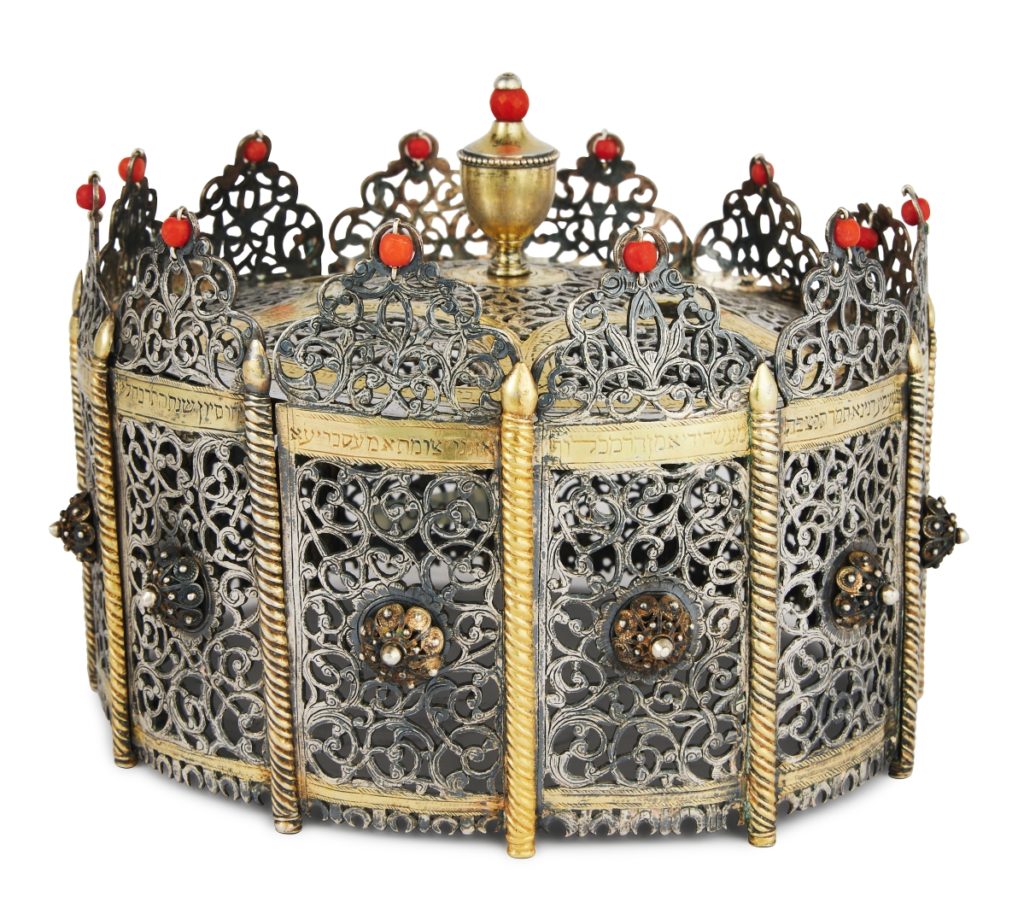
“For things you can’t get again, the sky’s the limit. It was signed and dated, the artist was known and it was a very fine example of North African art: it ticked every box,” Sharon Liberman Mintz said of this Algerian parcel-gilt silver torah crown, signed Makhlouf Oznenu, Mascara, dated 1868, that rose to a third place finish at $151,200. It was purchased by the North Carolina Museum of Art ($30/50,000).
When asked what drove institutional interest in the collection, Mintz observed it was a combination of great material as well as a concerted effort on the part of American institutions – not just ones that focus on Judaica – to achieve multicultural diversity within their collections.
Items from the Fifteenth Century to the present were on offer throughout the sale, on objects not only from Israeli and European communities but those from North America, North Africa and both the Middle and Far East. Of the rarities in the Halpern collection, the textiles were considered some of the most important, with some being the only extant examples.
An important Italian torah ark curtain, dated 1717, took top-lot honors in the sale, selling to the North Carolina Museum of Art (NCMA) in Raleigh, N.C., for $170,100 against an estimate of $30/50,000. Considered a tour-de-force of needlework, the curtain is embroidered in gilt thread with the entirety of the text of the Ten Commandments as they appear in Exodus 20; it is the only known curtain to feature the text of the Ten Commandments in full. The curtain had been published in Vivian B. Mann (ed.), Gardens and Ghettos: The Art of Jewish Life in Italy (Berkeley: University of California Press, 1989) and Bracha Yaniv’s Ceremonial Synagogue Textiles: From Ashkenazi, Sephardi, and Italian Communities, translated by Yohai Goell (London: The Littman Library of Jewish Civilization, 2019).
NCMA is one of a couple of art museums in the United States with a permanent gallery devoted to Jewish ceremonial art and it is actively building its collection. In addition to the early Eighteenth Century torah ark curtain cited above, it was the successful buyer at $151,200 of an Algerian parcel-gilt silver torah crown, signed Makhlouf Oznenu, Mascara, and dated 1868. It was one of the pieces featured in Weinstein’s Collector’s Guide and had been exhibited in Yeshiva University Museum’s “The Sephardic Journey.” NCMA additionally paid $37,800 for a richly embroidered Eighteenth Century Italian torah mantle that had also been published in Yaniv’s Ceremonial Synagogue Textiles.
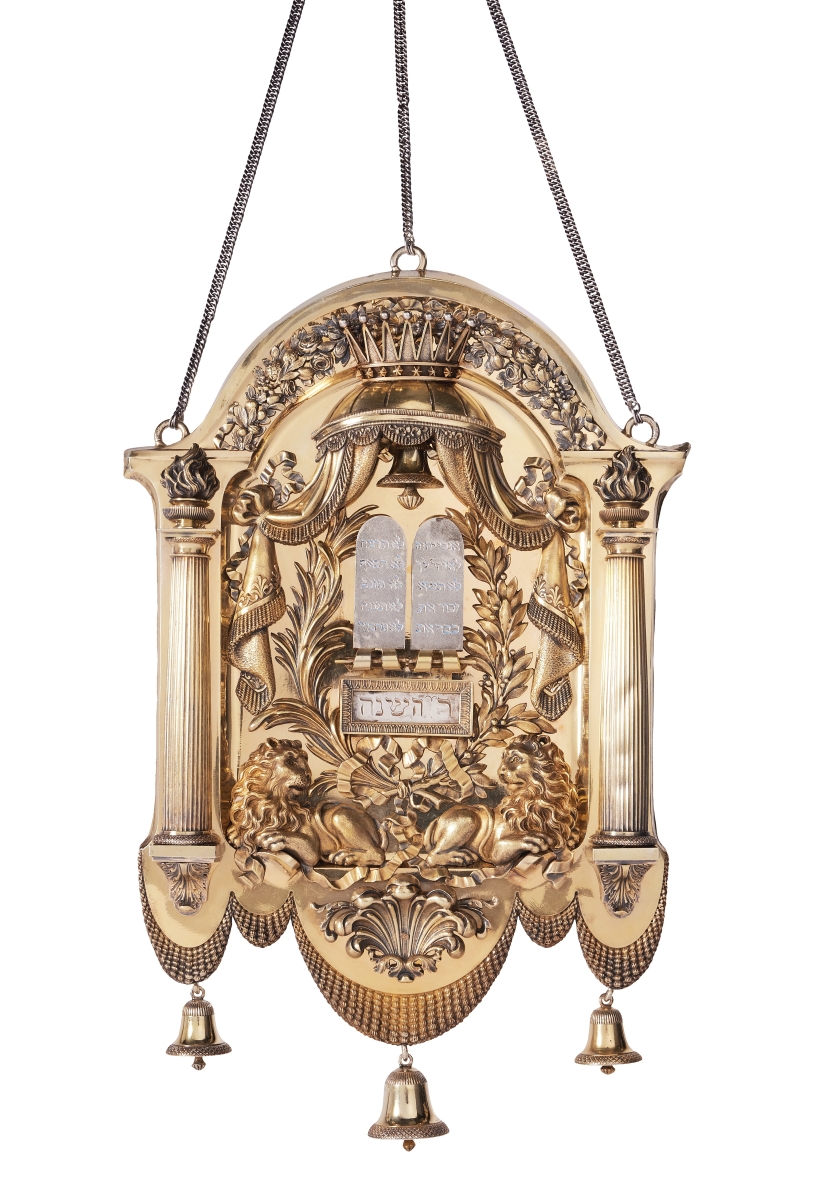
The Museum of Fine Arts, Houston, acquired for $126,000 this Neoclassical German silver-gilt torah shield and en suite finials, the shield made by George Zeiller in Munich in 1825 ($100/150,000).
A Nineteenth Century torah ark curtain that had been featured in no fewer than three publications but whose origin was debated found a home with a private collector, underbid by museums, for $163,800, a price high enough to warrant second place honors. The curtain’s composition suggests an Ottoman origin, while the embroidery techniques employed are more characteristic of curtains made in Italy.
An important Eastern Europe torah ark curtain or parokhet, with matching valance, magnificent in its opulent use of velvet and silk fabrics, gilt and multicolored silk threads, mounted beads and sequins or paillettes, was equally impressive in its size at 10 feet tall. In the end, the maxim “the larger the object, the smaller the market” may have played a part and it did not sell from the podium, though Mintz said she had post-auction interest.
The lot in the sale with the highest estimate – a Neoclassical German silver-gilt torah shield and en suite finials, the shield made in 1825 by George Zeiller – sold to the Museum of Fine Arts, Houston (MFAH), for $126,000. The shield relates to one made by Zeiller in 1828 for the first synagogue in Munich, which is now in the Skirball Museum in Cincinnati. The MFAH was also the successful bidder at $110,250 of a large parcel-gilt silver torah crown, probably Polish, late Eighteenth or early Nineteenth Century. It was the second time it had crossed the block at Sotheby’s, previously in 1986 in the estate of Admor of Mezhibush, The Apter Rav, Isaac Meir Heschel (1901-1985) when Halpern bought it.
By the end of the first session, the MFAH had purchased a dozen additional lots, including silver and textiles.
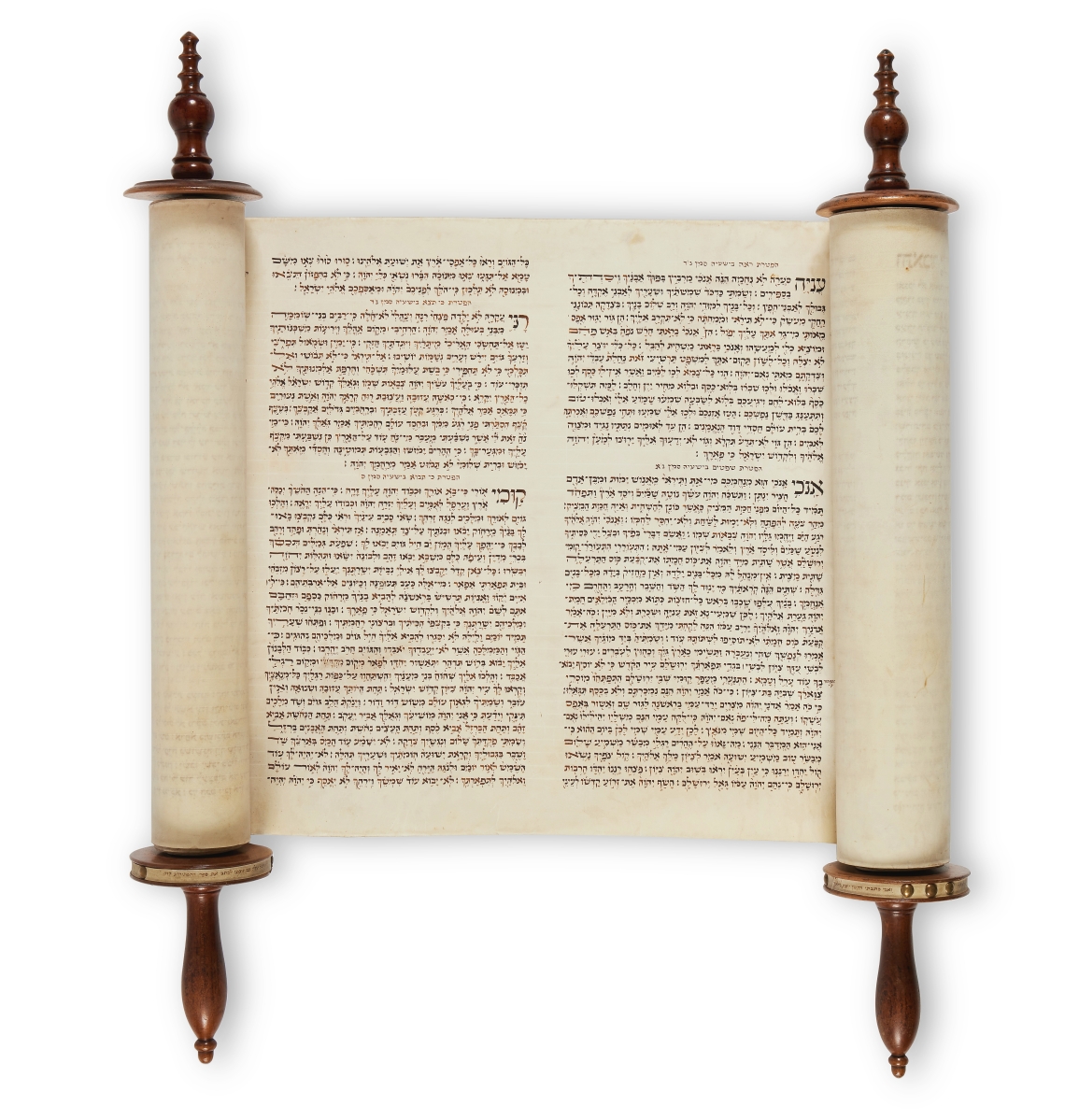
This Haftarah scroll is unusual and rare in that it contains a colophon on parchment slips at the base of its wooden rollers, that identifies the name of the donors — Baruch Mayer of Wolfisheim and his wife Sarah — and the scribe, Joseph Bloch, with a date of 1873 and Strasbourg. It brought $21,420 from a private collector, the highest price paid in the online-only session on December 20 ($5/7,000).
International institutions were also successful competitors at the sale. A Jewish museum in Italy beat out competition from bidders in Europe, Israel and Asia for an important 1772 kettubah, or marriage contract, between two of the most prominent families in the Piedmontese town of Casale Monferrato. Described as “a rare, splendid example of the manner in which the Jews of Piedmont would celebrate their joyous occasions,” the catalog additionally says that it is one of fewer than a dozen decorated contemporary examples from the region. It sold within estimate, for $63,000. The Warsaw Ghetto Museum paid $37,800 for the sale catalog’s cover lot, a bronze Hanukkah lamp, probably Polish, Nineteenth Century, and monumental at 64 inches tall.
Two lots that soared past expectations included an Austrian gilt-metal charity box for dowering brides, circa 1860-80, from Schindlauer, Lodz, that sold to an institution for $50,400, well ahead of its $8/12,000 estimate. An even more dynamic result was seen in a Chinese silver filigree lantern-form spice container from the early Twentieth Century, estimated at $2/3,000 and offered without reserve, that a private collector purchased for $40,320.
Bezalel Academy of Arts and Design was established in Jerusalem in 1906 by artist Boris Schatz and is considered one of the most prestigious art schools in Israel. The sale included four works from the school’s early period, notably a silver mounted marble nine-light candelabrum that sold within estimate for $25,300. A wool carpet depicting the Old City of Jerusalem that had been published in Anton Felton’s Jewish Carpets: A History and Guide (1997) was in astonishingly pristine original condition and laid down $18,900, more than double its high estimate.
_1804-787x1024.jpg)
This pair of Hungarian parcel-gilt silver torah finials was made in what is today Bratislava, Slovakia, in 1804, more than tripled expectations when a private collector paid $18,900 for them ($4/6,000).
The top three lots in the online-only “The Halpern Judaica Collection: Tradition and Treasure | Part II,” which closed on December 20, were each purchased by private collectors. A Haftarah (or lection from the Prophets) scroll that had been published in no fewer than five sources was a rare dated and localized example, made by Joseph Bloch in Strasbourg, Germany, in 1873, led the day when it sold for $21,240.
A pair of Hungarian parcel-gilt silver torah finials, made in Pressburg, today Bratislava, Slovakia, 1804, earned a second place finish in the online-only sale at $18,900. Rounding out the leaderboard in the online sale was an Esther scroll from Eighteenth Century Amsterdam, which featured an elaborately engraved border, which earned $17,640.
“Sotheby’s did extensive cataloging of the collection, making the history relevant and accessible. It really drew people in,” Mintz noted in acknowledging the success of the sale. “I want to particularly recognize my colleagues, John Ward, in the silver department, who was a significant actor in the sale. Shaul Seidler-Feller, my associate in the books and manuscripts department, was also deeply involved. It’s nice to see a younger generation step up.”
Prices quoted include the buyer’s premium as reported by the auction house. For more information, www.sothebys.com or 212-636-7000.

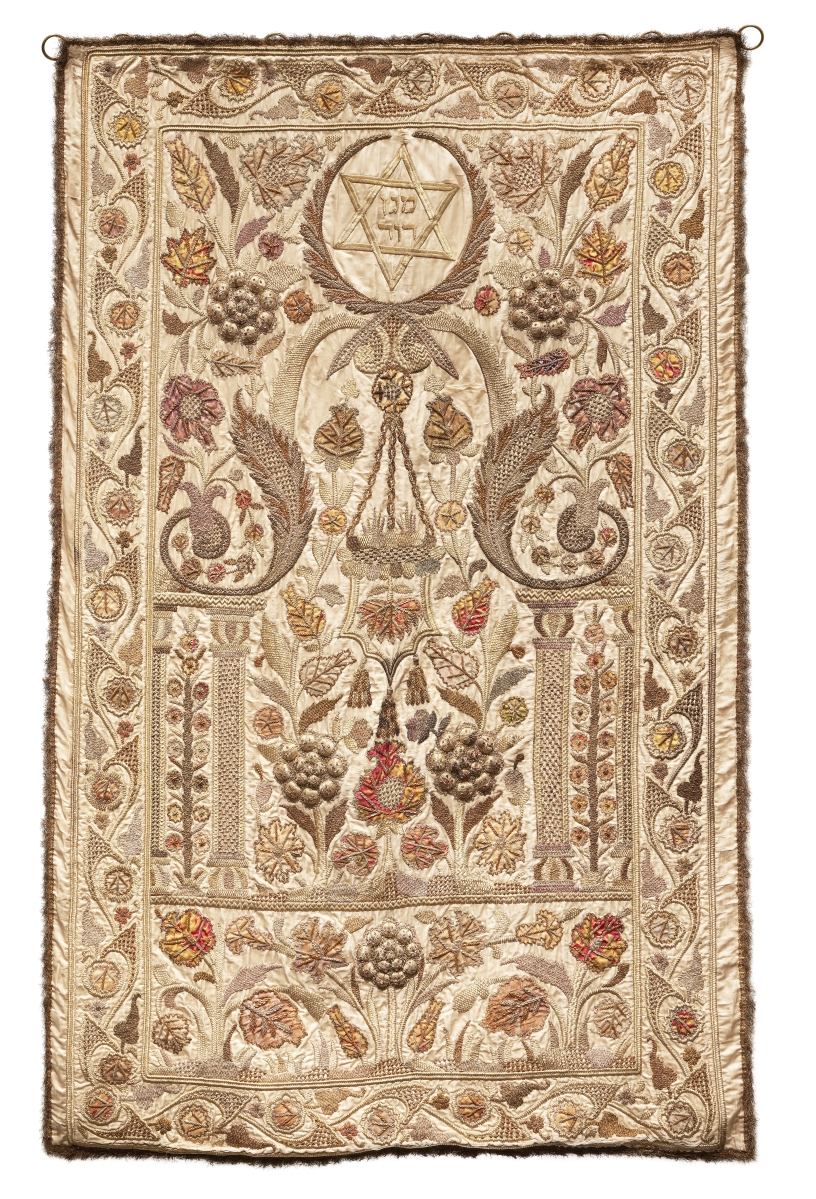
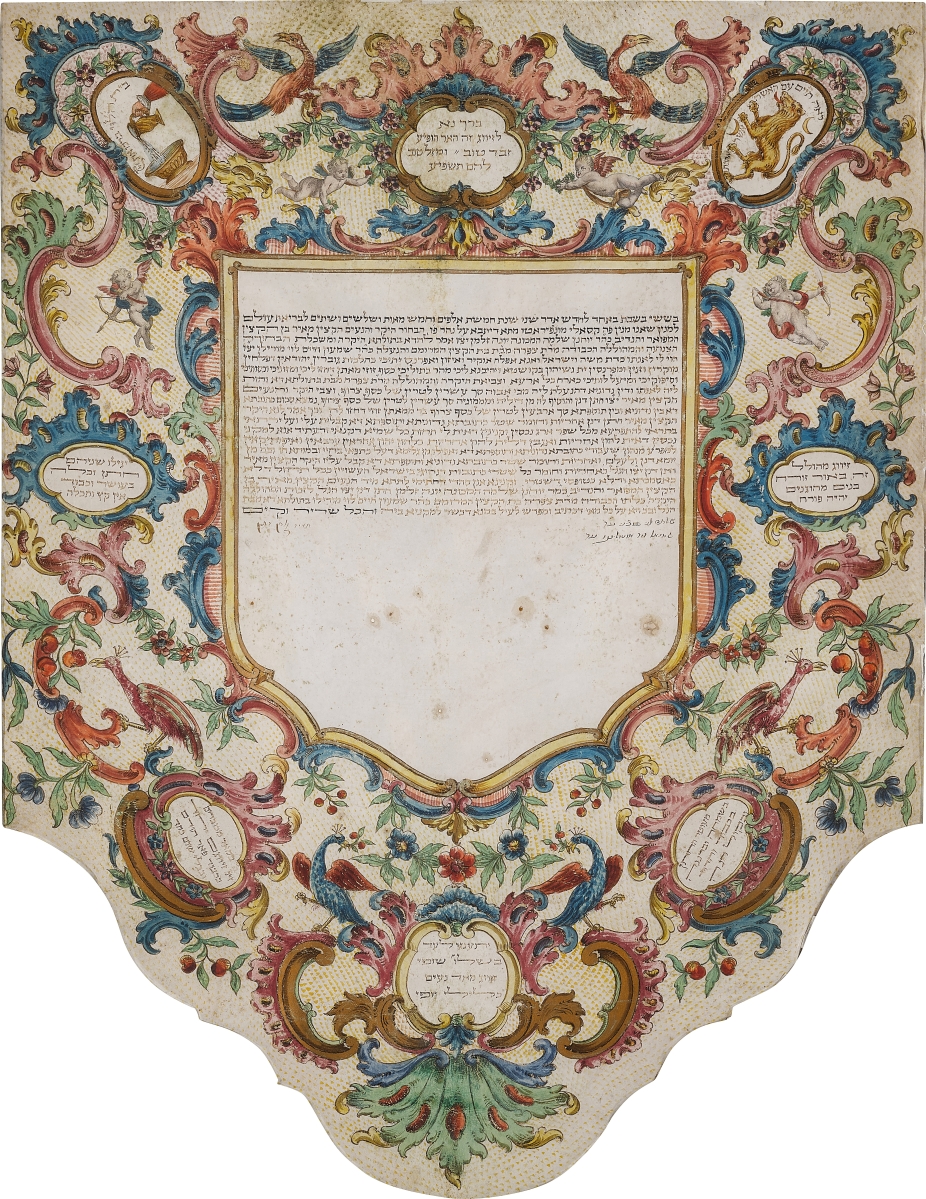
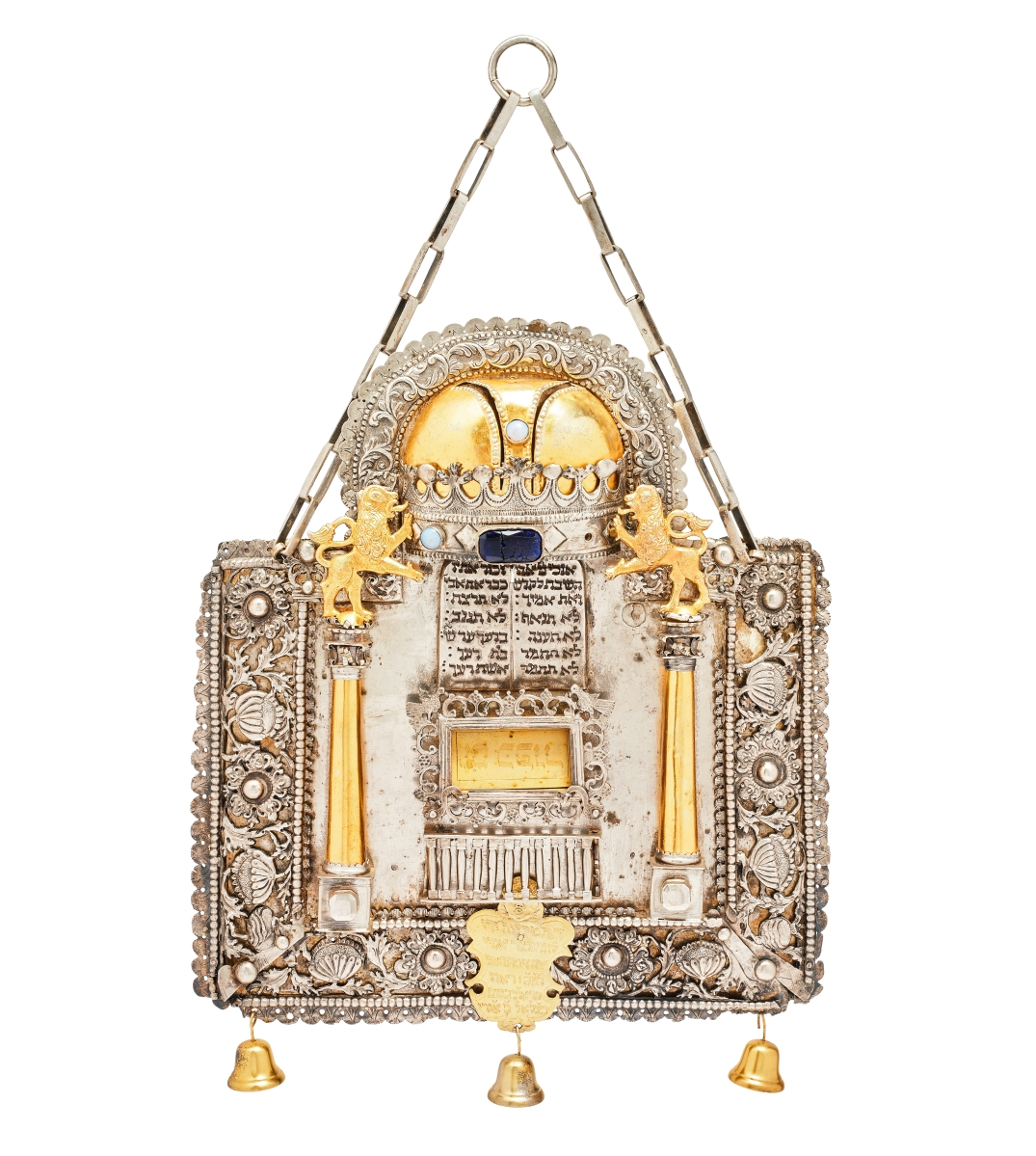
_1865.jpg)
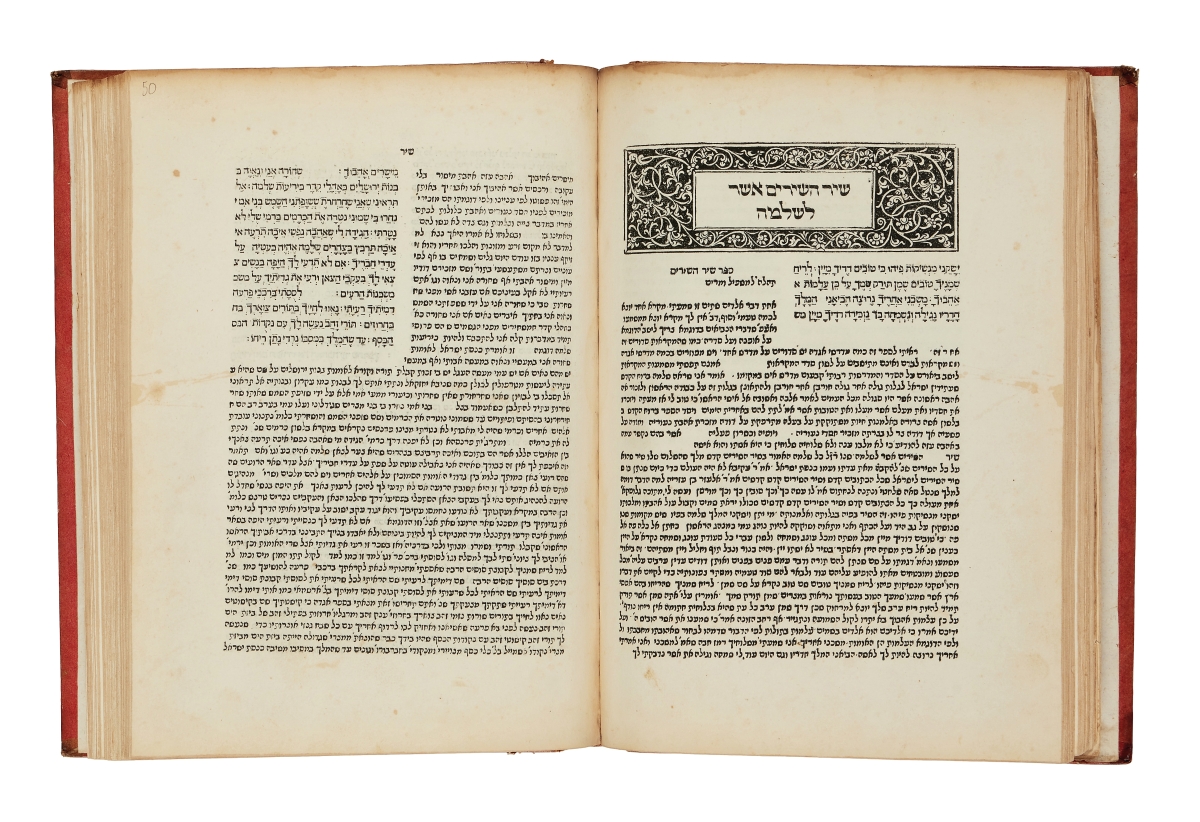
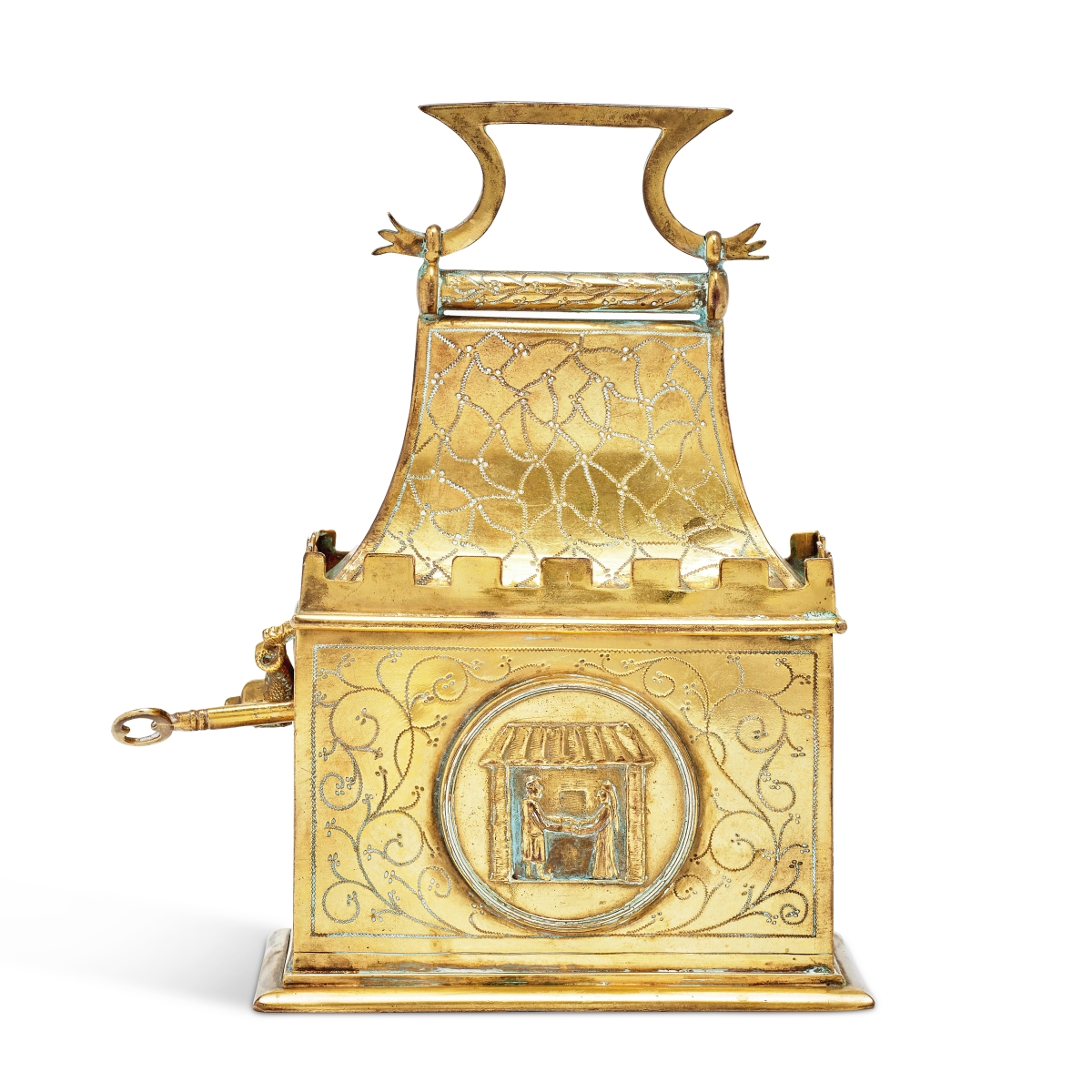
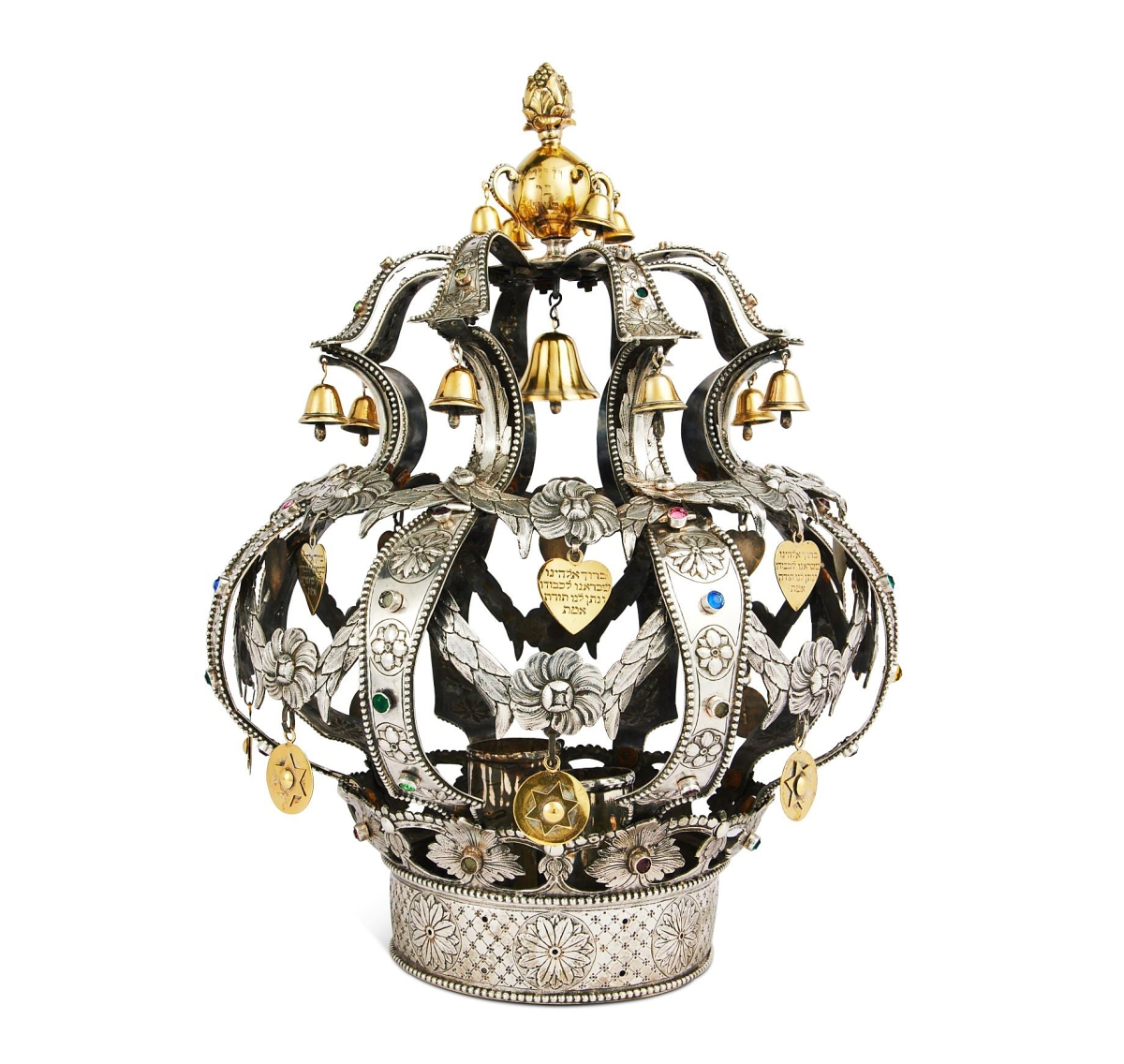
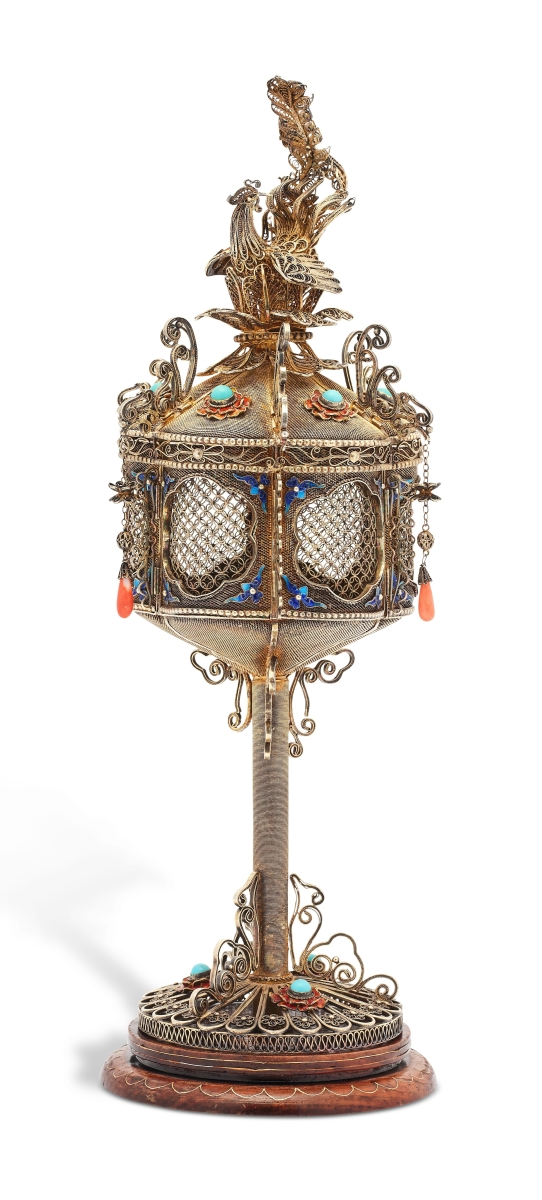
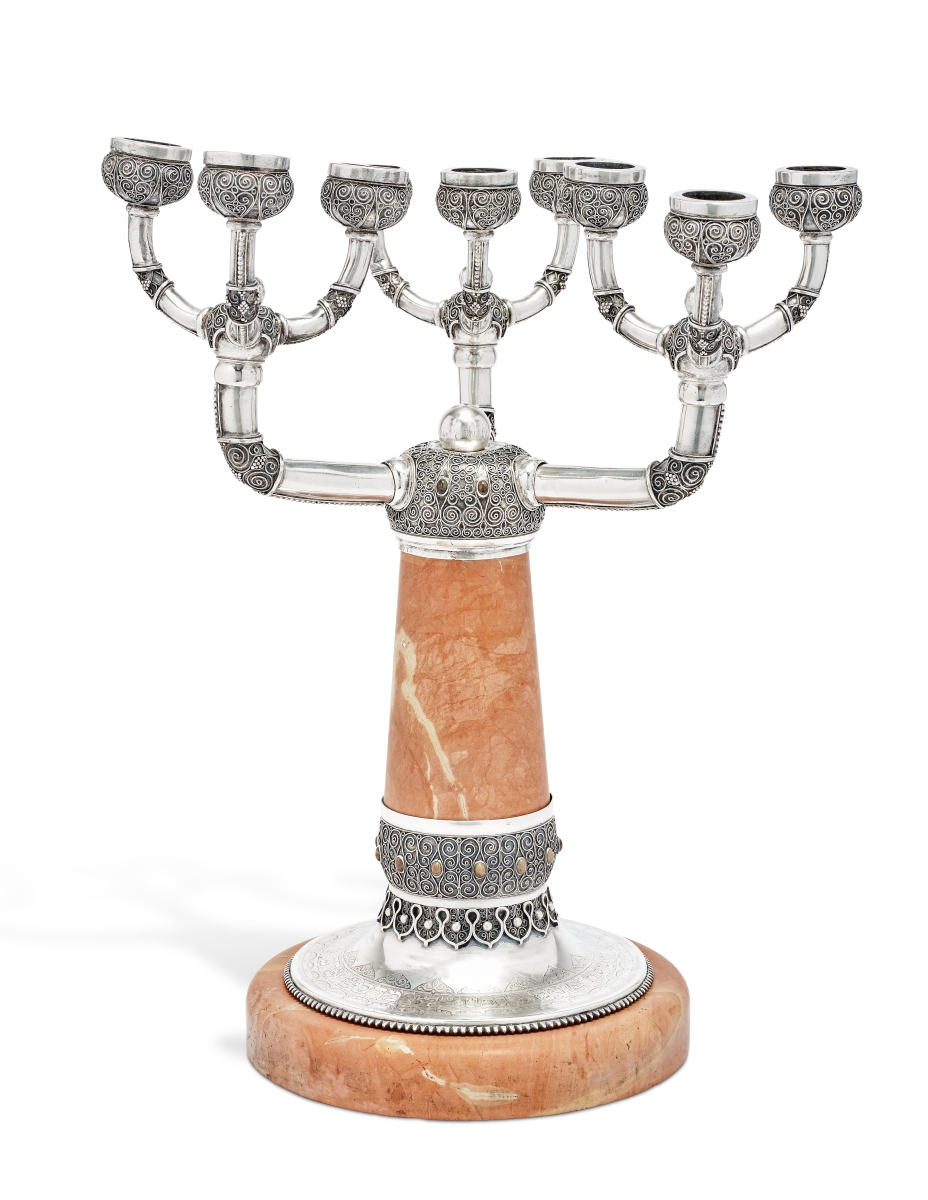
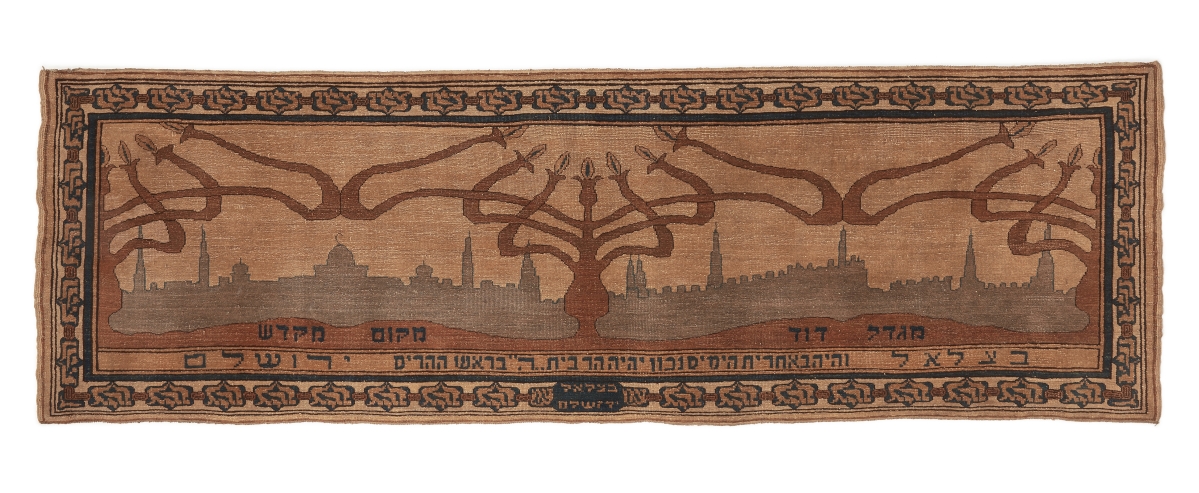
_1804.jpg)
